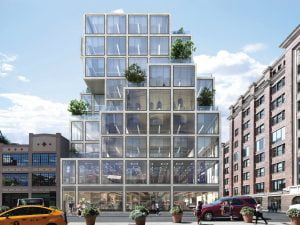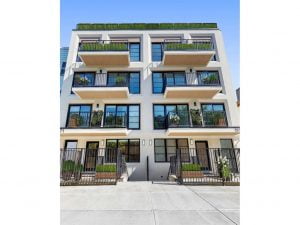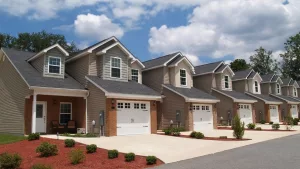Buy an Apartment in a Smaller Boutique Building in NYC
Go Back To Previous PageThere’s something so glamorous about buying an apartment in one of the more prominent buildings in New York City. Bigger buildings have more people, fewer group costs, and many more high-rises. Though most people like to think big, sometimes, it can pay off to get an apartment in a “boutique” apartment complex. The smaller Boutique condo Building in NYC has a lot to offer the right person, but is this move right for you? It often seems like different apartment sizes tend to cater to people of different lifestyles. In many cases, it’s not just an appearance but legit. Here’s what you should know about getting an apartment in a petite building.
Boutique Condo Buildings vs. Larger Buildings: How Do They Stack Up?
To determine whether or not you should move into a petite apartment building, you must be aware of how each building style will impact your living situation. Here’s the general scoop on what you should expect.
Small buildings tend to be more intimate.
You will be more likely to know your neighbors, which is a fantastic benefit. However, you will also have to deal with any problematic neighbors , which can become a far more significant problem than if they lived in a massive building. Who you live next to will make a huge impact here.
, which can become a far more significant problem than if they lived in a massive building. Who you live next to will make a huge impact here.
Boutique buildings often struggle to find enough volunteers for their boards.
This can lead to undermanaged communities or heavily mismanaged ones.
Depending on the building, it might be easier to approve.
If you have a low-demand building or a building with a reputation for lax standards, you may be able to get approved for an apartment loan more quickly. This is particularly true in smaller low-income apartment buildings.
More significant apartment buildings are also at a higher risk for bed bug infestations that are out of control.
The more neighbors you have, the more likely it is that pests will be attracted to your area. If pests spread from apartment to apartment, you might end up with unwanted guests that are even harder to eliminate.
you might end up with unwanted guests that are even harder to eliminate.
The more people who live in a building, the more expenses can be shared.
This is also true about sharing liabilities. In many cases, this can lighten the load you have to face.
Extremely tall buildings can be complex, logistically speaking.
Carrying stuff upstairs is never fun. Moreover, some people get skittish in tall buildings.
Smaller buildings have boards that can accomplish tasks quickly.
With a larger building, more people will be managing and discussing matters. This can result in a significant amount of bureaucratic red tape. Smaller buildings are better for adhering to rules and enjoying more personal freedoms.
In some cases, boutique apartments can be exclusive.
Since they are limited in number, these types of apartments can be very exclusive. Certain buildings can be high in demand, which can drive your profit when you sell them. A rare upside of buying an apartment in a smaller boutique condo is that you won’t have hundreds of competing units to deal with when it comes time to sell.
By default, your unit will be rare because there may be years in between when units in your building come to the market for sale. And when units do come on the market, they usually are the only listing in their building.
You’re most likely to find boutique condo buildings in Lower Manhattan neighborhoods like the West Village, Soho, Meatpacking District, Tribeca, some areas of Brooklyn, and the Lower East Side.
The General Verdict On Smaller Boutique Buildings in NYC
As you can see, having extra neighbors can pay off. If you have too few units, you will be under a hefty burden regarding maintenance and repairs. Besides, it’s likely that you won’t have any residents willing to work on the board and do it efficiently. However, having the intimacy, better prices, and easier approvals can make a boutique apartment purchase a wise choice.
Most people do not want to be in a super tower, simply because it is possible to feel crowded by being near so many others. However, being one of three families in a building can also be a pain. In other words, most people are best served by something between the two extremes.
Who Would Fare Best In A Smaller Boutique Building in NYC?
People who are open to doing due diligence when they move in tend to do well with a boutique apartment. If you choose this option, ensure you have a sufficient amount of savings available. Since many random repairs are split between owners, you may incur a sudden expense that could put you into debt if you’re not prepared.
What Is The Best Sweet Spot For An Apartment Building?
If you’re looking for a smaller apartment building, it’s best to find one with at least 20 to 30 units. Most buildings shouldn’t have more than 300 unless they’re a high-rise, and a building between 20 and 200 units is usually a good choice. Of course, there is more to consider than you have to be aware of.
Know Thy Neighbor: Understanding The Role Neighbors Play In Smaller Boutique Condo Buildings in NYC
To go for an ultra-small apartment building, you must check who will live in or around you. Your neighbors will have a far higher impact in a small building. Here’s why it pays to take a look at the neighbors:
- Neighbors who destroy property are far more damaging in a small building. You might not notice the damage if it’s just one nuisance neighbor in a large building. Or, at the very least, your neighbors might be able to catch the vandal in the act.
- Having sane neighbors will mean that your board will run smoothly. On the other hand, having a single lousy neighbor who ends up volunteering on the board can result in lax rule enforcement, discrimination, or, in extreme cases, embezzlement, which can lead to severe financial losses.
- If your neighbors are troublemakers, you might find yourself in trouble. This is the case with both large and small buildings. However, small buildings can significantly increase the chances of being a victim, as they may be familiar with you and know where you live.
- Noisy neighbors are far more noticeable in a smaller building. No one likes to have young children running around screaming through the halls at 11 PM.
- If the apartment is known for having a capable management board, then you might want to proceed with your purchase. This means maintenance will be a breeze, and you can expect your apartment to remain up to code without serious expenses in most cases. On the other hand, corrupt management can lead to litigation or worse.
How To Pick A Smaller Boutique Building in NYC That’s Right For You
Before you choose an apartment, make sure you have a good feel of the place. The tips below can help you learn more about it:
- Check out who’s hanging out near the building. They might be neighbors or friends of neighbors.
- If possible, ask someone who lives in the area for their opinion on the building. Most people will be honest about their beliefs and may even advise you on moving in.
- Read up on the apartment board’s functions and recent measures. Apartments will usually have documentation on this, much like how condos or co-ops do.
- Search up the apartment’s litigation records. If you notice a lot of lawsuits, run. It may also be harder to get a mortgage CEMA.
Not Sure If A Boutique Apartment Is Right For You?
New York City has many suitable boutique apartments that avoid the pitfalls of typical “small building living.” That’s why it’s best to ask your real estate agent or broker for their opinion on the decision. You might be surprised at what you hear—and how it may impact your decision to move.
One of the most significant risks to buying an apartment in a smaller boutique building is that you’ll be responsible for a more substantial proportion of building-wide expenses or liabilities.


